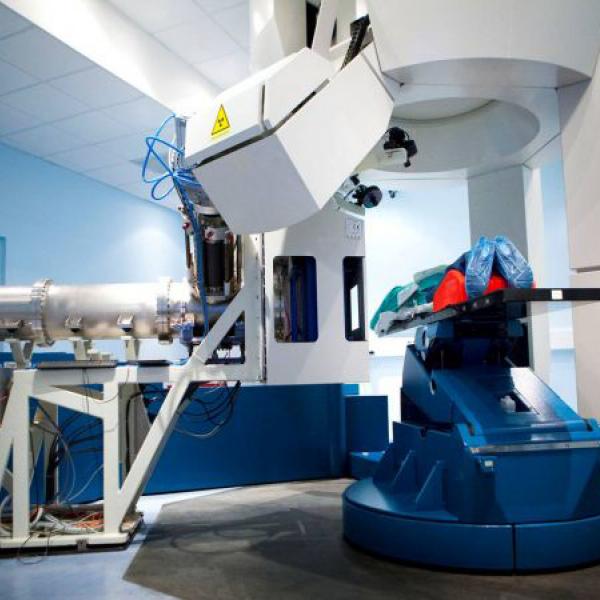
Radiotherapy

This program focuses on the development of Neutron Capture Enhanced Particle Therapy (NCEPT) from initial preclinical work, to clinical trials and finally commercial translation and licencing.
NCEPT amplifies the impact of proton and heavy ion therapy (collectively known as particle therapy) by capturing slow-moving (thermal) neutrons which are produced when the primary particle beam interacts with the target volume (tumour mass). This effect can deliver extra radiation dose both to the primary tumour and any nearby microscopic tumour spread.
Areas of focus
Towards clinical translation of NCEPT
Dose quantification and treatment planning
Neutron capture agent development
Towards clinical translation of NCEPT
NCEPT uses low-toxicity agents, which accumulate in cancer cells, and are enriched with either boron-10 or gadolinium-157. The initial NCEPT simulation studies and in vitro experiments have been performed with carbon and helium ions and two candidate neutron capture agents - boronophenylalanine and a triphenylphosphonium salt. Following the successful completion of preclinical studies, which are being guided by clinical partners in Japan and the United States, a pilot treatment of terminal head and neck vancer patients will be performed at HIMAC Japan.
Dose quantification and treatment planning
To enable clinical uptake, simulation methods to calculate the additional dose delivered from NCEPT are necessary Using Geant4 Monte Carlo simulations, unique energy and temporal signatures generated by neutron capture were identified that could be used during NCEPT for dose quantification, quality assurance and prediction of individual treatment outcome. Methods and systems using prompt-gamma detection are also in development for clinical use.
Neutron capture agent development
To apply NCEPT to difficult to treat cancers, more selective neutron capture agents (NCAs) will be required. A number of agents are currently being developed to enable targeted delivery of B-10 and Gd-157.






